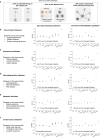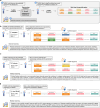This is a preprint.
A foundation model for clinician-centered drug repurposing
- PMID: 39148855
- PMCID: PMC11326339
- DOI: 10.1101/2023.03.19.23287458
A foundation model for clinician-centered drug repurposing
Update in
-
A foundation model for clinician-centered drug repurposing.Nat Med. 2024 Dec;30(12):3601-3613. doi: 10.1038/s41591-024-03233-x. Epub 2024 Sep 25. Nat Med. 2024. PMID: 39322717 Free PMC article.
Abstract
Drug repurposing - identifying new therapeutic uses for approved drugs - is often serendipitous and opportunistic, expanding the use of drugs for new diseases. The clinical utility of drug repurposing AI models remains limited because the models focus narrowly on diseases for which some drugs already exist. Here, we introduce TXGNN, a graph foundation model for zero-shot drug repurposing, identifying therapeutic candidates even for diseases with limited treatment options or no existing drugs. Trained on a medical knowledge graph, TXGNN utilizes a graph neural network and metric-learning module to rank drugs as potential indications and contraindications across 17,080 diseases. When benchmarked against eight methods, TXGNN improves prediction accuracy for indications by 49.2% and contraindications by 35.1% under stringent zero-shot evaluation. To facilitate model interpretation, TXGNN's Explainer module offers transparent insights into multi-hop medical knowledge paths that form TXGNN's predictive rationales. Human evaluation of TXGNN's Explainer showed that TXGNN's predictions and explanations perform encouragingly on multiple axes of performance beyond accuracy. Many of TxGNN's novel predictions align with off-label prescriptions clinicians make in a large healthcare system. TXGNN's drug repurposing predictions are accurate, consistent with off-label drug use, and can be investigated by human experts through multi-hop interpretable rationales.
Conflict of interest statement
Competing interests. The authors declare no competing interests.
Figures






References
-
- O’Connell D. Neglected diseases. Nature 449, 157–157 (2007).
-
- U.S. Food and Drug Administration. Rare Disease Day 2021. https://www.fda.gov/news-events/fda-voices/rare-disease-day-2021-fda-sho... (2023).
-
- Pushpakom S. et al. Drug repurposing: progress, challenges and recommendations. Nature Reviews Drug Discovery 18, 41–58 (2019). - PubMed
Methods-only References
-
- Gilmer J., Schoenholz S. S., Riley P. F., Vinyals O. & Dahl G. E. Neural message passing for quantum chemistry. In ICML (2017).
-
- Yang B., Yih W. t., He X., Gao J. & Deng L. Embedding entities and relations for learning and inference in knowledge bases. ICLR (2015).
-
- Lin Y., Liu Z., Sun M., Liu Y. & Zhu X. Learning entity and relation embeddings for knowledge graph completion. In AAAI (2015).
-
- Stang P. E. et al. Advancing the science for active surveillance: rationale and design for the Observational Medical Outcomes Partnership. Annals of Internal Medicine 153, 600–606 (2010). - PubMed
Publication types
Grants and funding
LinkOut - more resources
Full Text Sources
